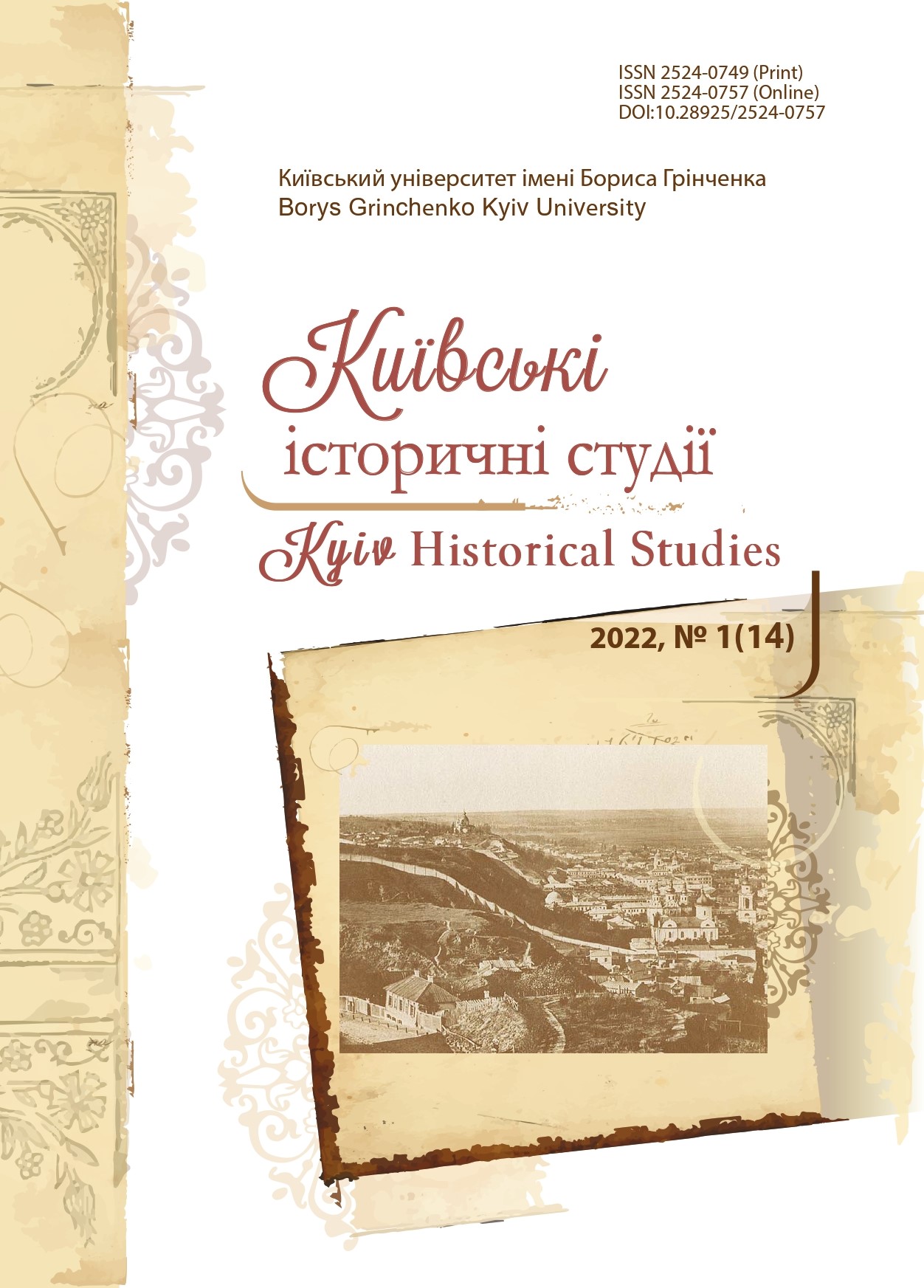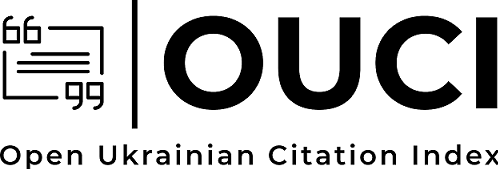З історії кооперативного руху в таборі полонених українців Вецляр, Німеччина: створення та діяльність спілки «Чайня» (грудень 1915–1916 рр.)
DOI:
https://doi.org/10.28925/2524-0757.2022.13Ключові слова:
кооперативна спілка, «Чайня», пай, чистий прибуток, полонені вояки-українці, Вецляр, НімеччинаАнотація
У статті висвітлено створення та діяльність у таборі полонених українців Вецляр (Німеччина) кооперативного товариства «Чайня» (грудень 1915–1916 рр.). «Чайня» пропонувала своїм відвід-увачам низькі ціни на продукти й зручну можливість «почаювати», що привернуло до неї значну кількість таборян. Прибуток закладу розподілявся рішенням загальних зборів як на виплату диві-дендів на внесені паї, так і на потреби різних таборових організацій та на благодійну підтримку потребуючим (зокрема, й поза табором). Впродовж усього свого існування «Чайня» залишалась ефективним комерційним підприємством, єднаючи у своєму складі полонених різних політичних поглядів й уподобань. Вона зробила поважний внесок у розбудову національного життя у таборі, дієво підтримуючи діяльність освітніх курсів і таборових шкіл грамоти й спонсоруючи кошти на загальноукраїнські потреби.
Завантаження
Посилання
Jung, I. & Wiedl, W. (2016). Ein “besonderes” Lager für Ukrainer Zwischen Propaganda und Alltagsnot. Wetzlar und der Erste Weltkrieg 1914–1918. Neustadt an der Aisch, pp. 262–282 [in German].
Kryvosheieva, L. M. (2005). Kooperatyvnyi rukh v taborakh viyskovopolonenykh ukraintsiv chasiv Pershoi svitovoi viyiny [Cooperative Movement in the Camps of Ukrainian Prisoners of War during the First World War]. Kulturolohichnyi visnyk, 15, 40–44 [in Ukrainian].
Kryvosheieva, L. M. (2009). Natsionalno-prosvitnia diialnist Soiuzu vyzvolennia Ukrainy v taborakh viiskovopolonenykh ukraintsiv (1914–1918 rr.) [National-Educational Activity of the Union of Liberation of Ukraine in the Camps of Ukrainian Prisoners of War (1914–1918)]. Candidate thesis, Zaporizhzhia [in Ukrainian].
Golczewski, F. (2010). Deutsche und Ukrainer: 1914–1939. Paderborn [in German].
Rehmer, C. (1994). Das Ukrainerlager Wetzlar-Büblingshausen (1915–1918). Ein besonderes Lager? Mitteilungen des Wetzlarer Geschichtsvereins, 37, 77–116 [in German].
Rehmer, C. (1997). “Revolutionierungspolitik” und Ukrainer-Lager Die Ukraine im Blickfeld deutscher Interessen. Ende des 19. Jahrhunderts bis 1917/18. Frankfurt a. M. u. a., 245–280 [in German]. Runzheimer, J. (1994). «...Damit alle an uns erinnert werden»! Das ukrainische Gefangenenlager in Wetzlar Heimat an Lahn und Dill, 284, 2–3 [in German].
Runzheimer, J. (2002). Film als historische Quelle. Das ukrainische Kriegsgefangenenlager in Wetzlar Claudia Weidemann und Rudolf Worschech: Kamera. Oskar Barnack. Frühe Filme aus Wetzlar und Umgebung, Frankfurt am Main, 25–28 [in German].
Saievych, Y. Y. (2006). Ukrainski viiskovopoloneni v taborakh Nimechchyny: finansovo-hospodarska i kulturno-osvitnia diialnist (1914–1918 rr.) [Ukrainian Prisoners of War in the Camps of Germany: Financial and economic and cultural and educational activities (1914–1918)] Visnyk Natsionalnoho universytetu «Lvivska politekhnika», 571, 244–250 [in Ukrainian].
Saievych, Y. Y. (2007). Ukrainski viiskovopoloneni v taborakh Avstro-Uhorshchyny i Nimechchyny v period Pershoi svitovoi viiny: vyshkil ta orhanizatsiia roboty (1914–1918 rr.). Candidate thesis, Lviv [in Ukrainian].
Sribniak, I. (2020). Enzyklopädie der Kriegsgefangenschaſt: Das ukrainische Rastatt. Zur Gründung und Tätigkeit der Gemeinschaſt «Die Unabhängige Ukraine», 1915–1918. München-Paris [in Ukrainian].
Sribniak, I. (1997). Z istorii kulturno-prosvitnytskoi diialnosti polonenykh ukraintsiv u tabori Vetsliar (Nimechchyna) v 1915 r. Abstracts of Papers: Etnonatsionalnyi rozvytok v Ukraini ta stan ukrainskoi etnichnosti v diaspori: sutnist, realii konfliktnosti, problemy ta prohnozy na porozi XXI stolittia, pp. 441–443 [in Ukrainian].
Sribniak, I. (1998). Tabir polonenykh ukraintsiv u Vetsliari (Nimechchyna) u 1915–1917 rr. [Camp of Ukrainian prisoners in Wetzlar (Germany) in 1915–1917]. Visnyk Kyivskoho derzhavnoho linhvistychnoho universytetu, 2, 38–57 [in Ukrainian].
Sribniak, I. (1999). Poloneni ukraintsi v Avstro-Uhorshchyni ta Nimechchyni (1914–1920 rr.) [Ukrainian Prisoners of War in Austria-Hungary and Germany (1914–1920)]. [in Ukrainian].
Sribniak, I. (2020). Hromada polonenykh voiakiv-ukraintsiv tsarskoi armii u tabori Vetsliar, Nimechchyna (veresen 1915 – hruden 1916 rr.): za materialamy TsDAVO Ukrainy [Community of Captured Ukrainian Soldiers of the Tsarist Army in the Camp Wetzlar, Germany (September 1915 – December 1916): according to the TsDAVO, Ukraine]. Eminak, 3 (31), 217–233 [in Ukrainian].
Sribniak, I. (2021). Osoblyvosti provedennia natsionalno-prosvitnytskoi roboty u tabori polonenykh ukraintsiv Wetzlar, Nimechchyna (cherven 1916 – liutyi 1917 rr.) [Peculiarities of Conducting National Educational Work in the Camp of Ukrainian Prisoners of War Wetzlar, Germany (June 1916 – February 1917)]. Osvitolohichnyi dyskurs, 32 (2), 16–28 [in Ukrainian].
Sribniak, I. & Schneider, V. (2020a). Formuvannia svitohliadu polonenykh ukraintsiv zasobamy drukovanoho slova: natsionalno-vykhovna misiia chasopysu «Prosvitnii Lystok» u tabori Vetsliar, Nimechchyna (1916 r.) [Formation of the Worldview of Captured Ukrainians by Means of the Printed Word: National-educational mission of the periodical “Enlightenment Leaf” in the camp Wetzlar, Germany (1916)] Synopsys: tekst, kontekst, media, Kyiv, 26, 3, 90–97 [in Ukrainian].
Sribniak, I. & Schneider, V. (2020b). Chasopys «Prosvitnii Lystok» yak dzherelo dlia rekonstruktsii istorii rozvytku ukrainskoi hromady u tabori Vetslar, Nimechchyna (1916 r.) [Periodical «Prosvitnii Lystok» (“Enlightenment Leaf”) as a Source for the Reconstruction of History of the Ukrainian Community Development in the Wetzlar Camp, Germany (1916)] Kyivski istorychni studii, 2 (11), 50–59 [in Ukrainian]. DOI: https://doi.org/10.28925/2524-0757.2020.2.7
Zolota Lypa. (1924). Yuvileina zbirka tvoriv Bohdana Lepkoho z yioho zhyttiepysom, bibliohrafiieiu tvoriv i prysviatamy [Zolota Lypa: Jubilee collection of works by Bohdan Lepky with his biography, bibliography of works and dedications]. Pid red. Z. Kuzeli, Berlin [in Ukrainian].
Опубліковано
Як цитувати
Номер
Розділ
Ліцензія
Авторське право (c) 2022 Ігор Срібняк, Марина Палієнко

Ця робота ліцензується відповідно до Creative Commons Attribution-NonCommercial-ShareAlike 4.0 International License.
Автори, які публікуються у цьому журналі, залишають за собою право на авторство своєї роботи та передають журналу право першої публікації цієї роботи на умовах публічної ліцензії Creative Commons: Attribution-NonCommercial-ShareAlike 4.0 International (CC BY-NC-SA 4.0), котра дозволяє іншим особам вільно розповсюджувати опубліковану роботу з обов'язковим посиланням на авторів оригінальної роботи та першу публікацію роботи у цьому журналі.














